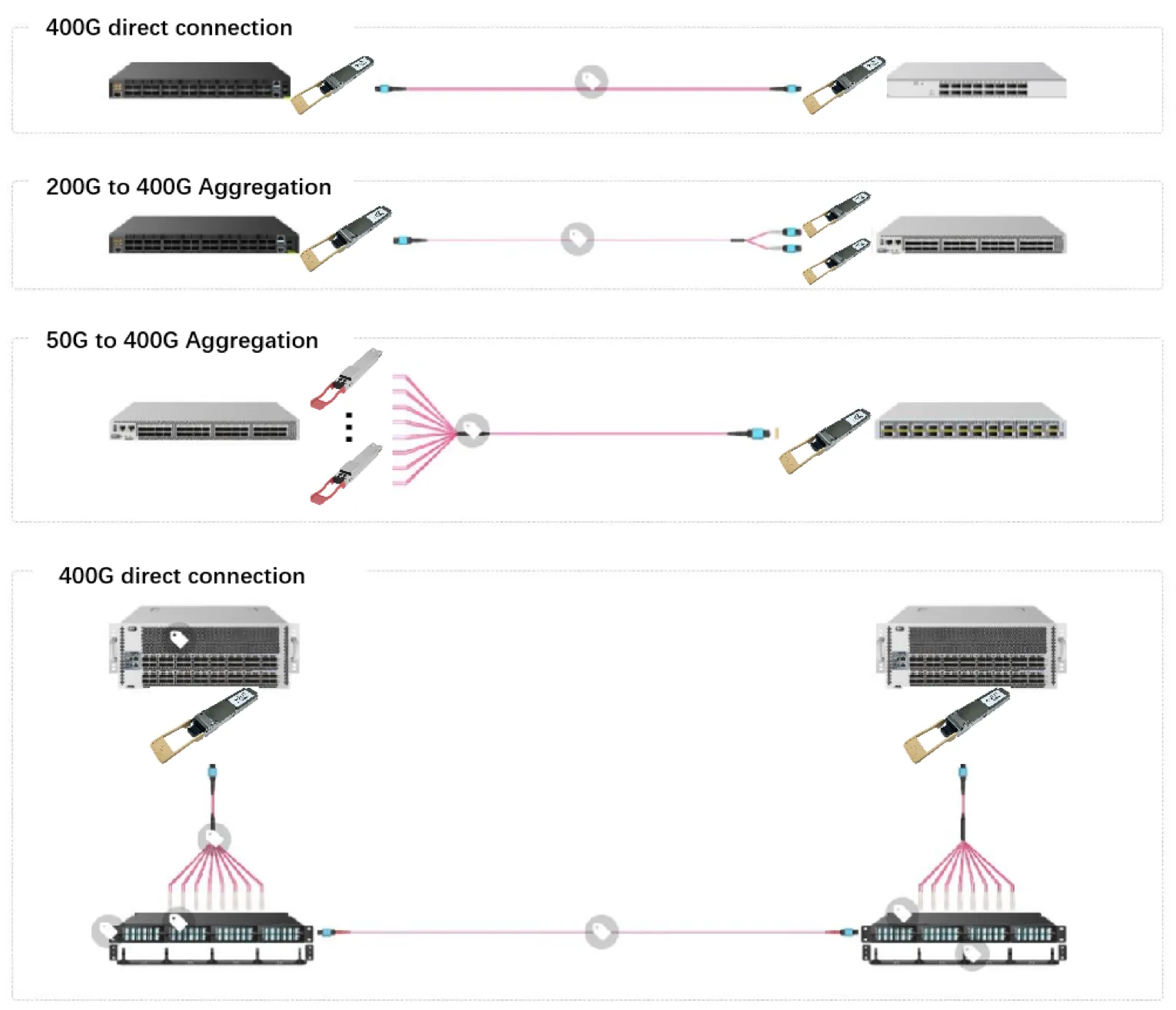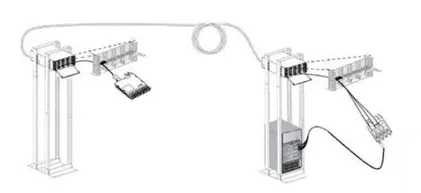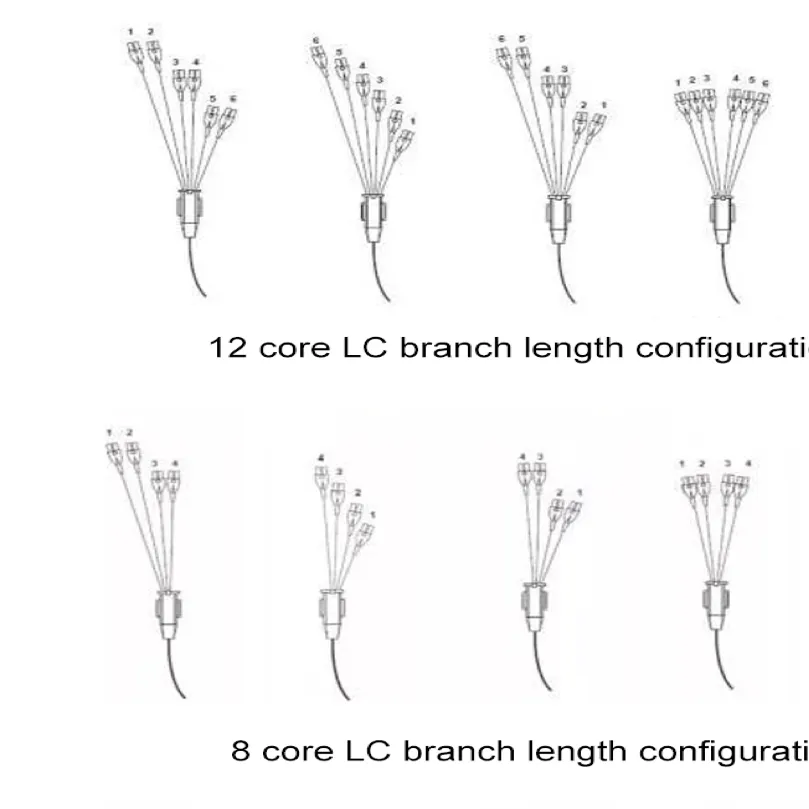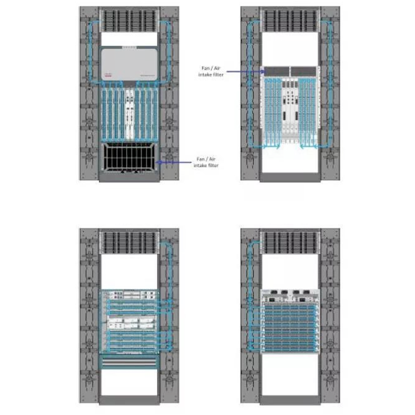What is an MTP/MPO-LC branch jumper?
A branch jumper is a fiber optic component with a multi-core MTP/MPO connector at one end and an outer sheath branch with a single or double core LC connector at the other end. It provides a conversion for the MTP/MPO connector for the trunk cable, trunk extension cable or single/double connector module for the back.
What are the benefits of using MTP/MPO-LC branch jumpers?
When designing a network system, it is very important to plan the structured cabling in advance. Our goal is to address current network needs and adapt to future developments. Structured cabling systems have the flexibility to handle the usual tasks of moving, adding or changing infrastructure as networks evolve. Using MTP/MPO-LC branch jumpers in high-density LAN or storage switches can help you improve structured cabling.
Some of the main advantages of using branch jumper assemblies over traditional jumpers:
- Branch jumpers provide a clean, high-density way to implement high-density switch port replication, which reduces the risk of port corruption or errors on the switch.
- Branch jumpers occupy less space in the cabinet and have better vertical management than traditional jumpers. The branch at one end of 12-core branch jumpers is much smaller than that of jumper with equal core number.
- Reduce fiber optic cable congestion for LAN and storage networks; can improve the increase of cooling airflow and make movement, increase and change easier.
- Branch jumper provides interleaving LC branches that can be used including engineering customizations to match the network ports of electronic equipment to provide seamless integration between wiring infrastructure and electronic equipment.
What are the typical applications of MTP/MPO-LC branch jumpers?
MTP/MPO-LC branch jumpers are used for port replication of blade switch board CARDS to facilitate connection of these ports to other devices. There are two types of branch jumpers, module branch jumpers and trunk branch jumpers, based on specific applications and what components are inserted.
The module branch jumper connects directly to the back of the MTP/MPO-LC module and copies the switch port to the distribution frame located in the same or adjacent rack. Typically with this application, the switch is located in MDA or column header switching.
Switch mapping distribution frames are located outside the location where the switch is located. Deploying this application is usually the primary distribution area (MDA) required when you have a common swap area and port replication.
What LC branch lengths should be used for MTP/MPO-LC branch jumpers?
The optimal branch jumper LC branch length will depend on the following factors: frame type, blade type, number of blade ports, port orientation and routing.
Which direction should the MTP/MPO-LC branch jumper is routed in for the switch?
The best switch routing direction will depend on two factors, the direction of the blade card and the fan/intake position. For example, if your switch is in the horizontal direction of the blade card and fan/air intake position, it does not prevent the branch jumper from coming from the left or right,. On the other hand, if the fan/intake is on one side of the switch, you should place your branch jumpers on the other side.
This also applies to the vertical direction of the blade card switch.






